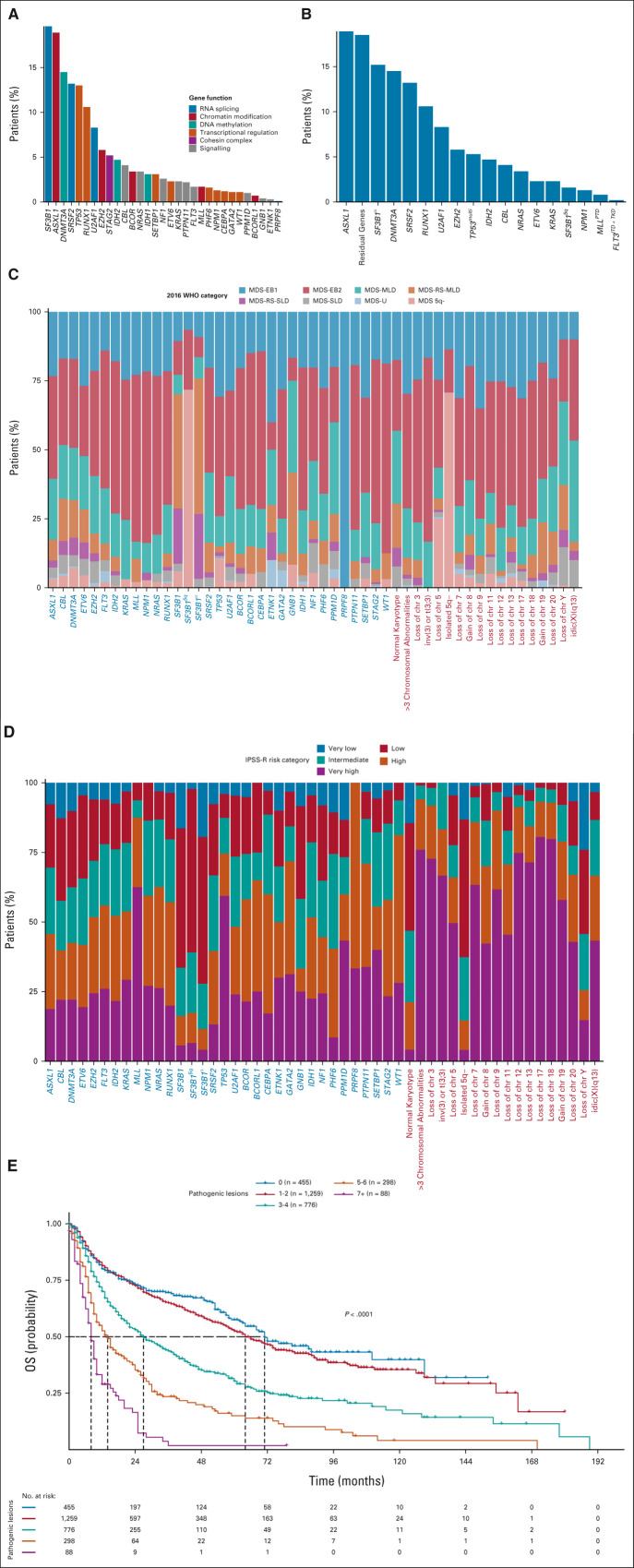FIG 1.
Molecular landscape of patients with MDS from the GenoMed4all cohort. (A) Frequency of mutations of the 31 genes included into IPSS-M score in 2,876 patients from the GenoMed4All cohort. Colors linked to the bars represent the gene function. (B) Frequency of mutations on genomic features grouped according to IPSS-M criteria. (C and D) Frequency of gene mutations and chromosomal abnormalities broken down by MDS subtypes according to 2016 WHO criteria and IPSS-R risk category, respectively. Mutations on genes are grouped according to IPSS-M criteria as main effect genes (gene labels are highlighted in blue) and residual genes (gene labels are highlighted in dark green). (E) Kaplan-Meier probability estimates of OS across numbers of oncogenic alterations per patient (gene mutations and cytogenetic abnormalities). P value is from log-rank test. Frequency of IPSS-M–related gene mutations and chromosomal abnormalities broken down by MDS subtypes according to 2022 WHO criteria and ICC criteria is available in the Data Supplement. ICC, International Consensus Classification of Myeloid Neoplasms and Acute Leukemia; MDS, myelodysplastic syndromes; MDS 5q-, MDS with isolated deletion of long arm of chromosome five; MDS-EB1, MDS with excess of blasts, type 1; MDS-EB2, MDS with excess of blasts, type 2; MDS-MLD, MDS with multilineage dysplasia; MDS-RS-MLD, MDS with ring sideroblasts and multilineage dysplasia; MDS-RS-SLD, MDS with ring sideroblasts and single-lineage dysplasia; MDS-SLD, MDS with single-lineage dysplasia; MDS-U, MDS unclassifiable; IPSS-R, Revised International Prognostic Scoring System; IPSS-M, Molecular International Prognostic Scoring System; OS, overall survival.

